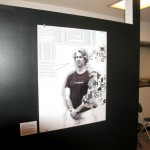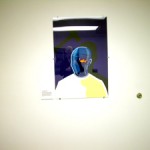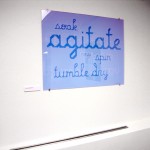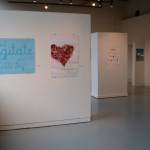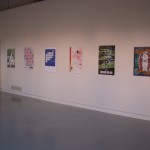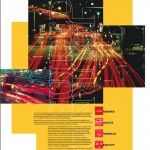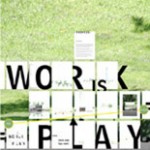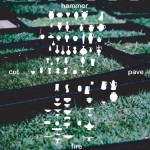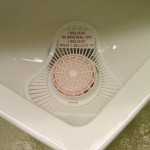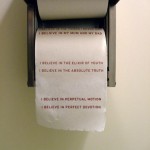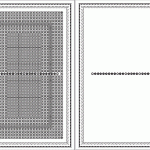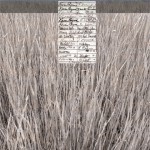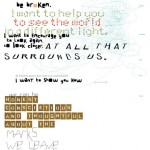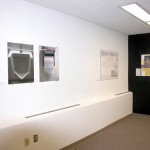
Communicate: Independent British Graphic Design since the Sixties
Barbican Gallery, London
September 16, 2004 – January 23, 2005
Curator: Rick Poynor
Statement: «Think of any iconic image, your favourite album cover, book or magazine and the chances are it will feature in this exhibition.
Communicate charts the emergence of independent British graphic design over the last forty years. It examines graphic designs influence on contemporary culture, publishing and the music industry. Highlighting its use in protest, the ever-increasing significance of the web and the experimental work created by designers who aren’t compromised by working to a commercial client’s brief.
Featuring more than 600 exhibits from album covers for New Order and Primal Scream, identities for BBC 2 and Big Brother, Biba and Paul Smith, magazines including OZ and i-D, posters for CND and the Anti-Nazi League and web sites for The Guardian and Donnie Darko. Communicate celebrates the achievements of designers as diverse as Alan Fletcher, Ken Garland, Michael English, Barney Bubbles, Peter Saville, Neville Brody, The Designer’s Republic, Tomato, Fuel, Intro and Hi-ReS!»
Designers included in the exhibition: Åbäke, Aboud Sodano, Airside, Alan Fletcher, Alan Kitching, Alex Rich, Angus Hyland (Pentagram), Anthony Burrill (Friendchip), Atelier, Aubrey Powell (Hipgnosis), Barney Bubbles, Barry Godber, Ben Drury, Bluesource, Bob Gill, Bob Wilkinson (Sans + Baum), Bryan Haynes, CDT, Central Station Design, Clare White, Colin Forbes, Damon Murray (Fuel), Daniel Brown -, David Bothwell, David Hillman (Pentagram), David King, David Pelham, De-construct, Dennis Bailey, Derek Birdsall, Foundation 33, Geoff White, George Daulby, George Mayhew, Gerald Nason, Graphic Thought Facility, Hamish Muir (8vo), Hapshash and the Coloured Coat (Michael English and Nigel Waymouth), Harri Peccinotti, Herbert Spencer, Hi-Res!, James Goggin, Jamie Reid, Jann Haworth, Jannuzzi Smith, Jock Kinneir, John McConnell (Pentagram), John Sewell, Johnson Banks, Jon Goodchild, Jon Wozencroft, Jonathan Barnbrook, Julian House, Intro, Kate Stephens, Katy Hepburn, Keith Cunningham, Ken Garland, Kerr/Noble, Klaus Voorman, Less Rain, Lucienne Roberts (Sans + Baum), Made Thought -, Malcolm Garrett, Margaret Calvert, Mark Farrow, Mark Holt (8vo), Mark Porter, Martin Sharp, Matt Willey, Me Company, Melvyn Gill, Michael Burke (8vo), Michael Nash Associates, Moira Bogue, Neville Brody, Nicholas de Ville, Nick Bell (UNA), Nigel Grierson, North, Patrick Wallis Burke, Paul Elliman, Paul Stiff, Pearce Marchbank, Peter Blake, Peter Miles (Fuel), Peter Saville, Phil Baines, Raymond Hawkey, Rebecca & Mike, Richard Hollis, Robert Brownjohn, Robert del Naja, Robin Fior, Rod Clark, Roger Law, Romek Marber, Roy Giles, Ruari McLean, Scott King, Simon Esterson, Simon Johnston (8vo), Siobhan Keaney, Spin, State, Stephen Coates, Stephen Hiett, Stephen Male, Stephen Sorrell (Fuel), Storm Thorgerson (Hipgnosis), Stuart Bailey, Studio Myerscough, Stylorouge, Terry Jones, The Chase, The Designers Republic, Thomas Wolsey, Tom Hingston, Tomato, Tony Arefin.
Catalogue of the exhibition: Rick Poynor, ed., Communicate: Independent British Graphic Design Since the Sixties, London: Laurence King Publishing, 2004.

